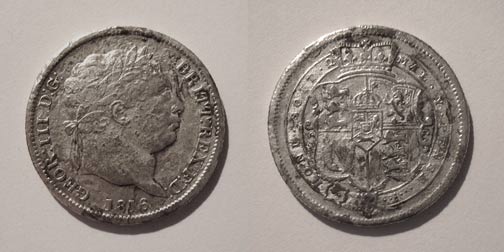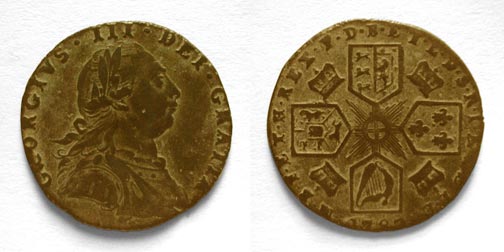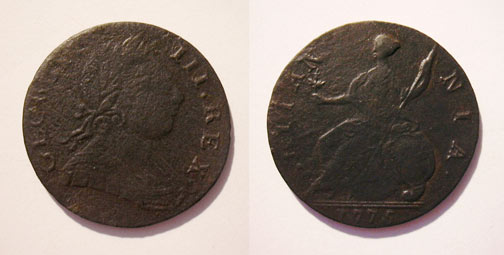William I |
Edward II |
||
William II |
Henry VIII |
||
Henry I |
Edward VI |
Anne |
|
Henry IV |
George I |
||
George II |
|||
Richard I |
|||
Edward IV |
|||
Edward V |
Cromwell |
William IV |
|
Richard III |
|||
George 3rd, 1760 - 1820

| 'Spade' Guinea, 1794 |

|
Shilling, 1816 |
Back to top

Sixpence, 1787 Not a particularly rare coin, but a rare detecting find. Geogian silver was generally hoarded, and therefore scarce in circulation - so much so that when the Tealby hoard of 5000+ Henry II pennies was found in 1805, Sir George Banks, President of the Royal Mint (but also a founding member of the British Museum), was forced to allow all but 200 of them to be melted down and re-minted. This sixpence has also been gilded, and was set in a mount at one time. Spink no. 3749 |

|
Halfpenny, 1775 |
Back to top
Home |
Collection |
Cartoons |
Stories |